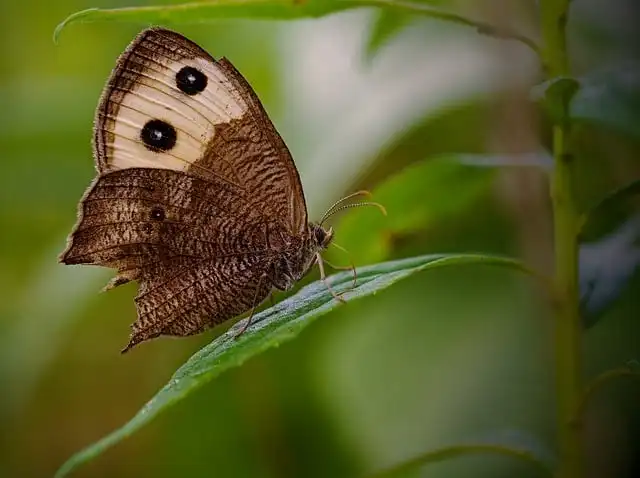
The very best time to use codling moth traps is in very early springtime. The local time to put them out can vary from March to May, depending on your area, as the grown-up apple moths will start to become energetic earlier in warmer environments. The codling moth traps intend to be out before the first blossoms open on the apple tree.
Any type of apples infected by codling moth ought to be thrown out and all stored apples checked closely to eliminate any that reveal wormholes that may have been missed out on.
Together with trimming apple trees each year, and feeding apple trees to maintain them healthy, dealing and identifying with parasites, including codling moths, promptly is very important to help obtain a wonderful harvest year after year. Our overview to codling moth control consists of ideas from a knowledgeable fruit tree expert to aid you recognize and handle these bothersome bugs.
The codling moth bores openings right into the apple’s core and after that departures the fruit again, leaving bigger holes as they leave. Upon cutting open an affected fruit, you will see the tunnels they carve out and more frass.
It is necessary to inspect all apples very closely at harvest time to keep only the best apples. Any type of apples infected by codling moth needs to be disposed of and all kept apples evaluated closely to eliminate any kind of that show wormholes that might have been missed out on. Store apples set out in trays and not touching each other and inspect the apples often to discard any type of broken or going soft.
The codling moth overwinters in spring to lay its eggs and, upon hatching, the larvae begin to chew their way into the fruit. The codling moth larvae cocoon once getting to complete dimension, often beneath bark or under debris near the tree’s base.
Fruits harmed early in the season tend to ripen and drop too soon and, if no codling moth control is established, they can infect great deals of the fruit. Damaged fruits should be thrown out and not included in your garden compost, as the moth can overwinter in the compost heap.
Drew’s interest for horticulture began with expanding vegetables and salad in elevated beds in a tiny metropolitan terrace garden. He has gone on to work as a professional gardener in historic yards throughout the UK and additionally specialise as a kitchen area gardener growing veggies, fruit, herbs, and cut blossoms.
Susan Poizner recommends an alternate chemical-free technique of codling moth control by utilizing maggot obstacles, or ‘orchard sox’. ‘They are little nylon sleeves that fit over infant apples when they’re about the size of a quarter,’ clarifies Susan. ‘These barriers prevent pests from laying agitate the fruit and broaden as the apples grow, making certain tidy, worm-free fruit by the end of the period.’
Various other non-chemical or natural insect control methods to manage codling moths include getting rid of fallen apples and plant debris through the season to eliminate habitats for the bugs to overwinter or pupate in and using companion planting to attract advantageous insects that are natural predators of codling moths.
The codling moth (Cydia pomonella) is an extremely troublesome insect for fruit trees, mainly pears and apples. The larvae of the codling moth consume and delve their way right into developing fruits and have a terrible impact on any kind of prospective harvest.
Get in touch with me with information and supplies from other Future brandsReceive email from us on behalf of our trusted companions or sponsorsBy sending your information you consent to the Conditions & terms and Privacy Plan and are aged 16 or over.
There are several techniques to manage codling moths and numerous do not need the demand for pesticides. The initial aggressive technique is to search for fruit tree ranges less at risk to codling moths. Early-maturing varieties are much less vulnerable to codling moth damage when compared to later-maturing ones, so going with such kinds can be useful if you mean to plant fruit trees on any scale, from an orchard to growing fruit trees in pots.
‘ Codling moths are a considerable bug for apple trees, commonly creating the traditional ‘wormy apple’ problem many home owners encounter,’ advises Susan Poizner, writer and creator of Orchard People. ‘The codling moth larvae, which are small worms, burrow right into apples as they grow, ruining the fruit. Codling moth scent traps can be used to track the apple moths and influence the number of males to decrease the amount of mating happening. The codling moth traps want to be out before the first blooms open on the apple tree.
When the apples are tiny, codling moth damage is usually noticeable early in the period. The distinct tell-side indication of apple months can be seen on close assessment of the surface of the developing apples.
Making use of a codling moth spray should be a last option, however, even when making use of such items, getting the timing right is essential to success. When eggs are laid and hatching as the larvae are shielded once they enter the fruit, they need to be used. Products such as carbaryl and spinosyn can be used at periods of 10-14 days however need to be made use of with care as the sprays might likewise damage the all-natural opponents of the codling moth.
Codling moths end up being energetic in spring and particularly target young fruits, making them inappropriate for needing and eating to be thrown out. If the pests are not managed appropriately, Fruit tree cultivators may deal with multiple generations of the apple moth each year and big numbers of apples can be messed up.
If you plant apple trees, it is very important to comprehend the risks of codling months – so we are here to assist. We look very closely at how to identify the pests and find the indicators of codling moth damage, along with the best approaches of codling moth control to consider at home.
‘ Seek tiny openings in the fruitlets with a little bit of oozing goop – this is actually frass, or codling moth poop,’ advises Susan Poizner. ‘The eggs are laid simply under the fruit’s skin, and as the apples grow, so do the larvae, resulting in the familiar wormy apples at harvest.’
In the same way as making self-made insect repellent to manage numerous common garden pests, there are recipes available to make a homemade codling moth trap. One of the most usual of these includes using a plastic milk jug or bottle that has actually been cut open. Mix a cup of vinegar and half a mug of molasses right into the container and loaded with water. Hang the DIY codling moth trap on the fruit tree and the insects need to be brought in to the odor it produces.
The likes of earwigs, assassin insects, ladybugs, lacewing, parasitical wasps and birds can assist manage the codling moth populace. Planting herbs such as dill and fennel can be a good way to bring in ladybugs, parasitical wasps, and a lot more valuable killers.
Codling moth pheromone catches can be used to track the apple moths and impact the number of males to reduce the amount of breeding occurring. The scent traps are open-sided and include a sticky sheet. A pellet having an artificial scent that copies the female codling month’s pheromones is placed onto this sheet, attracting men to the catch and getting them stuck inside. The codling moth scent catches want to be awaited spring and checked weekly.
Early generations will certainly generate one more that season, while later ones will appear in springtime to start the cycle once more. The codling moth life cycle can be rapid. The rate depends on the temperatures and apple tree owners in warmer climates may confront three generations per year.
Adult apple codling moths are around fifty percent to 3/4 inches long with brown-grey wings and a distinct coppery band of scales at the pointers of their wings. The codling moth larvae are worm-like and light in color, white-to-pink with a darker brownish or black head. The larvae of the codling moth hatch from tiny white eggs laid on establishing fruits.
‘ Codling moths are a considerable bug for apple trees, frequently creating the traditional ‘wormy apple’ trouble many house owners deal with,’ warns Susan Poizner, author and maker of Orchard People. ‘The codling moth larvae, which are small worms, burrow right into apples as they grow, messing up the fruit. While apples are their main target, codling moths can likewise influence pear trees.’
1 codling moth control2 codling moth larvae
3 moths
« Lebanese street food informs interior of Common Breads bakery by MA StudioAtelier Échelle reimagines Montreal dental clinic with residential vibe »
